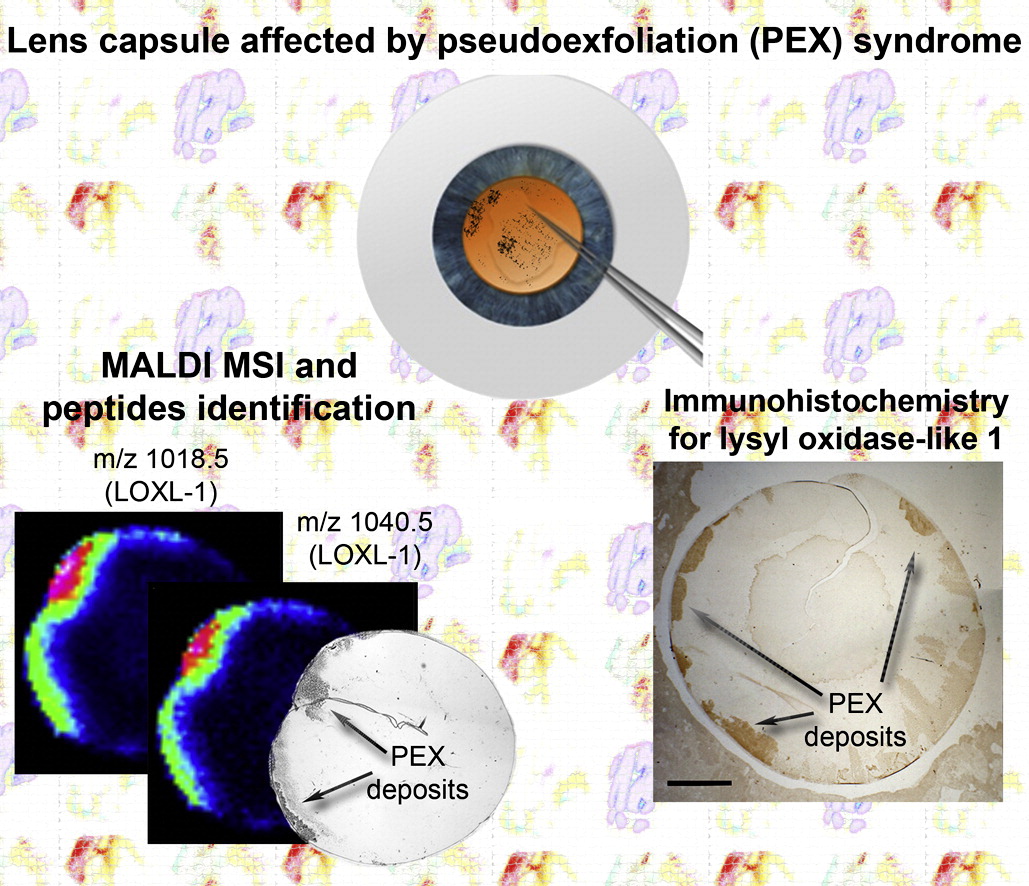 Maurizio Ronci, Shiwani Sharma, Sarah Martin, Jamie E. Craig and Nicolas H. Voelcker
Maurizio Ronci, Shiwani Sharma, Sarah Martin, Jamie E. Craig and Nicolas H. Voelcker
J Proteomics. 2013 Feb 11;82C:27-34.
Pseudoexfoliation (PEX) syndrome is an age-related systemic disease of the extracellular matrix, characterized by the presence of amyloid-like fibrillar deposits on the anterior lens capsule. The pathological deposits (PEX material) can obstruct aqueous outflow leading to increased intraocular pressure that in turn can result in glaucoma. PEX syndrome is the most common risk factor for glaucoma. In our previous work, we reported a protocol for the analysis of human lens capsules by MALDI MS imaging. Here, we extend our previous work applying the developed protocol to the analysis of human lens capsules affected by PEX syndrome. We focus our investigation on known components of the PEX material, namely lysyl oxidase-like 1 (LOXL1) and apolipoprotein E (APOE). Our results show that LOXL1 is more abundant in the deposits in the iris region and, alternatively APOE is concentrated in the PEX material accumulated in the pupillary area of the anterior lens capsule. Furthermore, we identify potentially relevant post-translational modifications which may have an important role in promoting the cross-linking processes in PEX syndrome and stabilize aggregate structures within the proteinaceous PEX material.


No responses yet